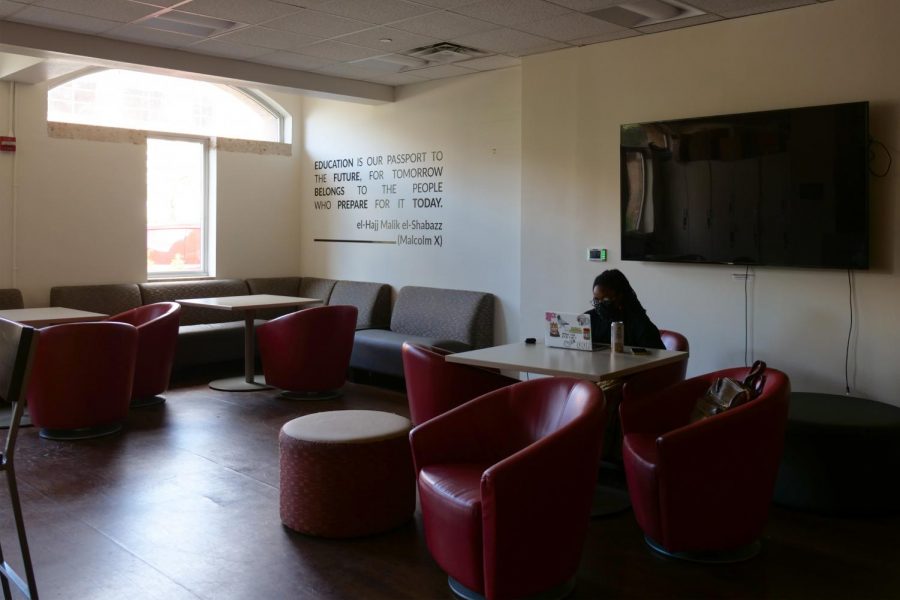Malcom X lounge provide safe, special place for Black students
December 18, 2021
Editor’s Note: This article first appeared in the November 5 flipbook.
Beaming smiles and energetic greetings filled the Malcolm X Lounge as newcomers hurried inside. With the lights off, students spread across the space, cuddled up in blankets and curled into cushioned red chairs. While some snacked and discussed the scary movie playing on the big screen, others took time to chat and do homework, each finding a happy place of their own.
The Malcolm X Lounge hosts movie nights and other recreational events, serving as a safe space for Black students on campus. Since Black students at UT pushed the UT administration to create the X Lounge in 1995, many have found solace in the homey space on the ground floor of the Jester Center.
“The community, the fellowship, there’s nothing but good times and good vibes there,” said Ophelia Brown, a public relations freshman. “You can always count on somebody to be there for you. Somebody is always going to be studying, willing to talk and just willing to be a friend.”
Christian Coffey, a theatre and dance studies senior, said many of his happiest memories, such as learning how to play spades and dominoes, are associated with this space.
While Coffey said he can recall movie nights, late night study sessions, game nights and watch parties, exercise science freshman Aaliyah Barlow said she holds late nights with friends in the lounge, blasting music and eating hot wings. Even more importantly, Brown said the X Lounge introduced her to many advice-bestowing upperclassmen who mentored her.
“When I was considering going here, my brother would always tell me about the Black spaces on campus — (how) I would always feel safe and open and how much fun they would have,” Brown said. “UT has a really close knit Black community. For other Black students to reach out and tell me about all that’s going on here, I felt like I wasn’t just another Black student at a (predominantly white institution). We have a family here.”
The Multicultural Engagement Center on campus also provides a place for students of color to find community. Founded in 1988, the MEC was built as a response to the anti-apartheid movement at UT, where Black students banded together to protest South Africa’s discriminatory racial policies and demanded a center for Black and Hispanic students. Originally the Minority Information Center, the name changed to the Multicultural Engagement Center in 2011 to include Asian and Indigenous students.
“It can be hard to find people that look like you,” Barlow said. “These spaces are for us, and so I’m able to go there and meet new Black people that I never really see around campus because it’s like finding a needle in the haystack. When you go to these places, it’s just nice to surround yourself with people on campus that look like you.”
Because Black students only make up 5.3% of the UT student body, finding a sense of community is essential. Computer science freshman Kylan Duncan said the vitality of Black spaces help him feel like he belongs on campus.
“I go to my computer science classes, and I’m the only Black kid in there,” Duncan said. “When I go to these Black spaces, it’s a reminder that I’m not alone.”
For Duncan, these spaces allow Black students to be uncensored versions of themselves and provides them with safety, community and positivity.
“I always have a safe haven to go to,” Brown said. “When anything is too overwhelming, my classes get too hard, or I just feel not heard, I know I can always go to the X Lounge and be seen, be heard and feel important.”



